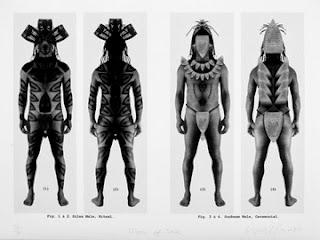ART
100: Introduction to Art
Instructor: Harriet Hoover
Fall
2013
Project
1: Public Art Proposal
Project
overview
Students
will research contemporary public art and create a proposal for a public
artwork on NC A&T campus or in the Greensboro metropolitan area. Students will learn about the wide
spectrum of public art including: traditional and abstract sculpture,
performance and socially engaged works of art, and time based media
installations. Based on their
research of Greensboro’s history and the relevance of art in the public sphere,
students will design, ideate, and create a physical mock-up of a proposed work
of art.
Contemporary
Artists/Organizations to research:
Jeanne-Claude
and Christo
David
Hammonds
Claus
Oldenburg
Pablo
Helguera
Paul
Ramirez Jones
Jenny
Holzer
Jeff
Koons
Maya
Lin
Richard
Serra
Robert
Smithson
Louise
Bourgeois
Mel
Chin / Safe House: http://melchin.org/oeuvre/render
Thomas
Demand
Philadelphia
Mural Arts Program
Art
in Odd Places: www.aiop.org
Key dates to
remember:
October
1: Assignment 1 due (research + proportionally correct drawings due)
Field Trip to the Weatherspoon Art
Museum
October
10: Assignment 2 due (site study
using perspective)
October
17: Assignment 3 due (initial sketches for a public work of art)
October
31: Assignment 4 due (physical
mock-up of public work of art due)
November
1st and 2nd: A&T Homecoming weekend + Art in Odd
Places Greensboro
November
14: Final drawings due
Step 1: Research public art, contemporary
artists who make public art, discover/draw/take field notes from a work of
public art in Greensboro.
First, you
must identify what constitutes “public art”. Research text and Internet resources. Find a work of public art on campus or in the
Greensboro area.
Assignment 1
(Due Tuesday, October 1):
·
At least 1 page written text of your public art research and
information on your chosen public artwork. Answer the following questions: Who made the work? What is
the medium (media), dimensions, and date it was created? Does the work commemorate an
event? How is it relevant to Greensboro’s
history? How does the public
interact with the work? Please
send your written analysis via email to Ms. Hoover at hhoover@ncat.edu by Tuesday, October 1 at 5 pm. Papers should be double spaced, 12
point, Times New Roman Font.
·
Create a drawing of the sculpture you are studying. This must be a proportionally correct
drawing of the sculpture/work of art using modeled line. You may take pictures of the work and
draw from the image. This must be
done on an 18x24” piece of drawing paper using media of your choice (ink,
graphite, or charcoal). Turn this
in to Ms. Hoover on Thursday, Sept. October 1.
Step 2: Select a site to propose a public work
of art
·
You will select a site on NC A&T campus or in the Greensboro
metropolitan area. Things to think
about: What is the significance of the space? Who will interact with the work in that space? Does the space itself have historical
significance?
Assignment
2: Create a detailed perspective
drawing of the space you plan to propose a public work of art.
Assignment 2: Using, one point or two point
perspective, create a site study of where you would like to propose a public
work of art. This drawing must be
done in graphite, on 18x24” paper.
You must use the rules of linear perspective to create a representative
site analysis. Due on October 10.
Step 3: Initial sketches of proposed work of art
+ physical mock-up of proposed art work
·
Inspired by the list of contemporary artists provided, students
will begin to design and plan what their work of art will look like. Students will create 3-4 drawing of
multiple angles and points of view, thinking about materiality, scale, and
form. Due October 17.
·
Students will also make a sculptural mock-up of their work of art
using cardboard, found objects, and other materials that are available to them.
Due October
31.
Step 4: Final Drawings of your proposal
·
Students will create multiple drawings to present to the class and
Art Department. Drawings will covey the following: exploration of the work of
art in context to the site and the public, exploration of materiality and the
principals of design, convey historical relevance and conceptual
contextualization, research installation and methods of construction.
Due
November 14.
http://www.greensboro-nc.gov/index.aspx?page=1778














































